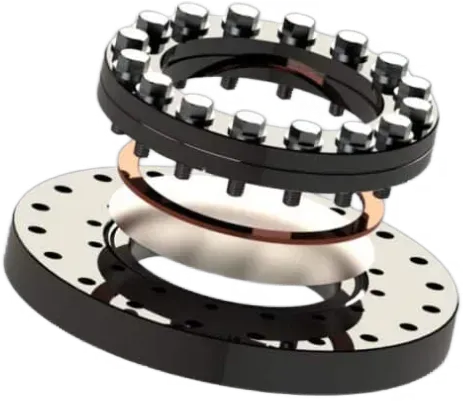Foil Window Flange System
Featuring ultra-thin titanium windows that are quick and inexpensive to replace in the field, the Atlas Foil Window Flange System is an excellent alternative to beryllium.
Prevent downstream failures to isolate different upstream vacuum regimes (i.e. isolate XHV from HV). The foils are low cost and user-replaceable allowing customers to source and test their own materials and thicknesses to fit the standard flanges.

HOW CAN WE ASSIST IN YOUR PRODUCT DEVELOPMENT NEEDS?
From our first custom aluminum vacuum chamber, to our recent niobium to stainless steel fittings for satellite delivery rockets, to our standard bimetal and titanium flanges and fittings, Atlas Technologies has been the solution of choice for mission critical projects around the world. Whether you have a napkin sketch, a full-fledged design, or just need a handful of our US-manufactured bimetal products, we can help.






























